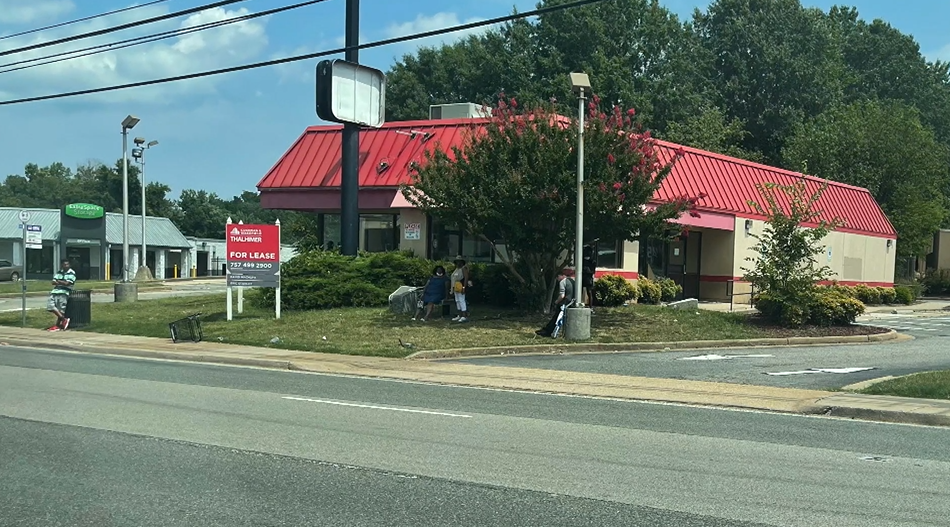RICHMOND, Va. -- A plan to improve waiting conditions at hundreds of Greater Richmond Transit Company (GRTC) bus stops across the metro Richmond region was approved this week kickstarting a project that aims to install accommodations over the next five years.
Running errands in Henrico's Willow Lawn was made easier Thursday for a Northside Richmond resident, who only wanted to go by Cherise, thanks to the help of GRTC.
“It's convenient to get you where you need to go without being in traffic a long time. The drivers are friendly. The buses are clean," Cherise said.
She's without a car at the moment, and GRTC is her preferred method to get around town, a sentiment echoed by Rawle Walcott.
“I leave my car and sometimes I catch the Pulse because it’s a comfortable ride, and it takes me from point A to point B," said Walcott, who lives in Church Hill.
But what's not comfortable is waiting for a ride.

While the Pulse stops up and down Broad Street have new, upgraded accommodations for riders, that's not the case at a vast majority of GRTC's 1,609 stops.
“We just need more benches and shelters," Cherise said.
Currently, just 5% of GRTC stops have coverings to protect riders from the elements. Twenty-one percent of the stops have seats for riders to rest while waiting for the bus.
"It bothers a lot of people when you have to stand around waiting for some of the buses. It just makes the day a little easier when you're transitioning from home to work or work to home, whatever the situation is, to have somewhere to sit," Cherise said.
“Especially when the sun is real hot or if the rain starts to fall, you don't want to be standing at the bus stop if there's no cover," Walcott said.
The good news
GRTC has a plan officially underway to fix that, in an effort to "provide a high-quality experience to our potential riders to attract them to transit to get them to keep riding our services," according to the Director of Planning and Scheduling Sam Sink.
On Tuesday, GRTC'S Board of Directors, made up of stakeholders from Richmond, Henrico, and Chesterfield, approved a five-year plan to increase the percentage of stops with a bench or shelter from 26% to at least 50% by 2027. A goal deemed "aspirational" would increase that number to 75% in the same timeframe.
The plan called for the installation of at least 160 shelters and 229 benches over the course of the project.
“I think it's very aggressive, but you've got to have goals to work for," Sink said. "It's all going to depend on how well we can get the funding.”

Sink said GRTC has secured some funding already but will need at least $11 million total to pull the project off. GRTC will look to a wide range of sources for money including federal grants and local business partnerships.
Because of strict regulations like permitting, rights-of-way, and environmental standards, Sink said it could take a year before riders start noticing progress.
“We've already started putting the wheels in motion to kind of get these things going and kind of check our regulatory boxes, but I think riders will start seeing shelters and benches installed in mass really starting next summer," Sink explained. "A lot of stops that we have programmed to get a shelter or a bench, the street may not be improved to the level we need it to be at to be able to put something. Maybe there's not a sidewalk or curb and gutter, so we have to coordinate with the jurisdictions to kind of piggyback onto their projects and get that infrastructure in there first."
GRTC will prioritize which stops are addressed by using scores for ridership and equity. Ridership scores will measure how frequently the stop is used, and equity scores will consider socioeconomic factors.
Safety concerns
Some riders have told the CBS 6 Problem Solvers that benches and shelters led to safety concerns.
For example, because of issues taking place at a location in the 2900 block of North Avenue in the city's Northside, GRTC plans to replace the shelter and remove the seating. Sink said GRTC has to work with the property owner and the city to get the space required to make changes.
Other riders also raised concerns about cleanliness.
"Where there are shelters, people eat and drink and leave all of the garbage. Then you don't want to sit there" Walcott said. "They need to send the cleaners around during midday and then again in the evening."
Sink said GRTC is partnering with the city and counties to ramp up cleaning and trash pickup at stops.
"We're still kind of working on how we're going to handle that increased workload as we put more of this infrastructure out there," Sink said.
Meanwhile, riders expressed excitement learning that steps are being taken to dignify their GRTC experience.
“It makes a difference and makes you feel more comfortable and appreciated for keeping the buses running," Cherise said. "Because without us, what would they do?”
This is a developing story, so anyone with more information can email newstips@wtvr.com to send a tip.










